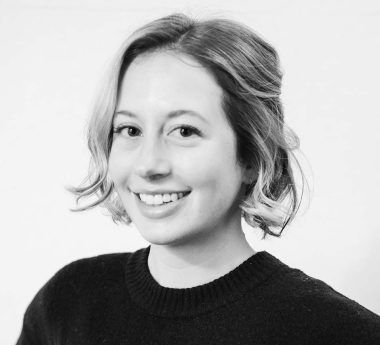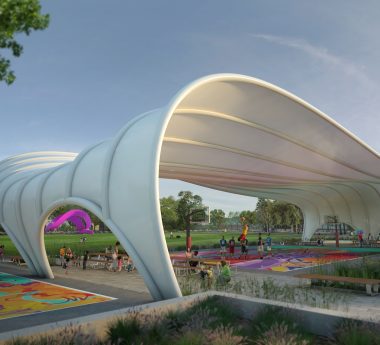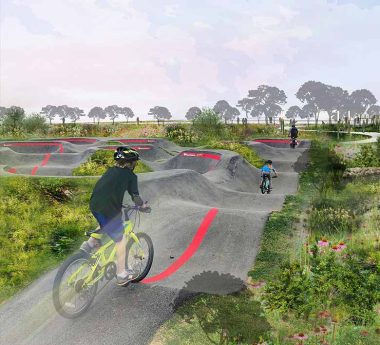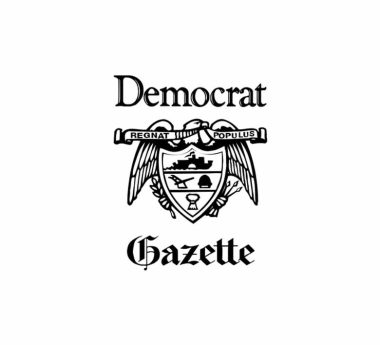Designing any public space requires a meaningful public engagement process. As urban designers and landscape architects, we are always interested in hearing and understanding what the community needs and wants from the space, and then using that input as the foundation for design. Our vision plan for the Jones Center Campus in Springdale, Arkansas, is based on a similar process of listening and understanding. And yet this project is incredibly different, in a powerful way.
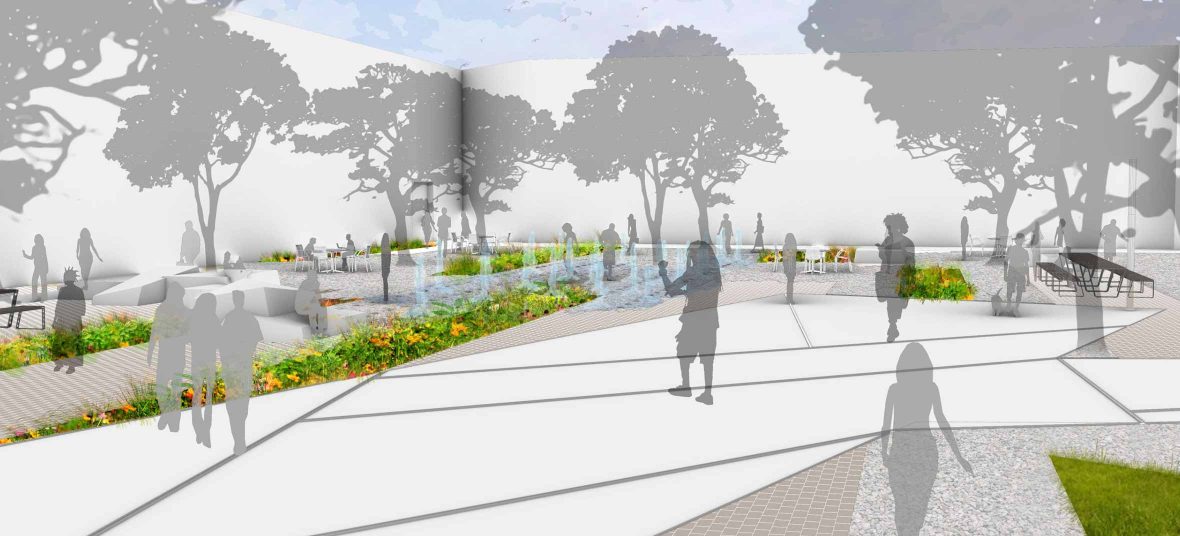
Inspiration: Listen to the Stories
As Scott recently wrote, we were inspired from the start by Bernice Jones’ original mission to create a place where “all are welcome.” The Jones Center is already a meaningful place, with indoor and outdoor sport and recreation space, education and healthcare facilities, a conference center, as well as space for more than 40 nonprofit organizations. Yet the 52-acre campus is underutilized, and we believe has the ability to become an “even more powerful community champion—THE place where people gather, linger, and feel a strong sense of belonging,” as Scott put it.
Our goal is to make the campus more inviting for all of Springdale, which is Northwest Arkansas’ most diverse community with representing populations of Latin American, African American, Southeast Asian and Marshallese residents. So, our job is to listen to the community’s stories and then interpret them through design. But here is where this project gets different from many other urban spaces we’ve designed. The fact that we’ve embarked on The Jones Campus Vision during such a pivotal time in our country—a global pandemic (which has hit this region particularly hard) paired with worldwide demonstrations in support of greater equity and inclusion—has given this project a different, more pronounced energy and inspiration. We feel deeply that this project has the opportunity to be a real game changer for this community. We have been motivated more than ever to listen, to facilitate conversations and give the community a voice, and ultimately to make the design of the Jones Center Campus theirs, not ours.
Design: Tell the Stories
When we hear and understand the community’s traditions, histories, motivations and aspirations, we have the opportunity to surprise them with designs that tell those stories, sometimes boldly, sometimes subtly. Even if their reactions are subconscious and hard to articulate, we aim to spark an emotional response and connection that feels familiar and inspires people to want to come back for more. Three design elements at the Jones Center Campus lay the foundation for this:
- A perimeter landscape surrounds the campus and creates connectivity both within it and beyond it. Design features emphasize notable connections such as a direct link to downtown Springdale from the southwest corner of the campus, and to the Mount Fitzgerald bike trail to the northeast.
- A series of north-south spines use vertical indicators and peaceful garden settings to create soft, tranquil transitions between the campus’ more open, programmatic spaces. For example, “Woven Links” are designed near the main Jones Center building entry and reflect native fabric weavings with patterns in the ground plane that are punctuated with water features.
- A meto spine pathway zig-zags through campus, influenced by Marshallese metos or stick charts that were used to help ancient sailors navigate the South Pacific without mechanical devices, showing wave patterns and currents. The zig-zag pattern of the paths allows us to create unique spaces at the intersections, including nooks for picnics or barbecues in the highly sensory wildflower meadow along the edge of the path.
While the western edge of the campus, with its downtown links, has a dramatic pedestrian experience in order to call attention and draw people into the site, the east side is lush with native Ozark landscapes. The site’s largest parking lot is in the northeast quadrant and is dubbed “Patchwork Parking” with weavings of greenspace used to soften what would otherwise appear as a vast expanse of asphalt. A large dog park is immediately adjacent and creates an intentional and inviting green zone between the parking area and busy street. To the south, the existing bike park is expanded and enhanced by gardens and native plantings, with meandering soft-surface paths whose organic forms are inspired by the flowing ruffled dresses that create movement in Latin dances. Much of the landscape design for this eastern portion of the campus is dictated by the adjacent Springdale Municipal Airport’s height restrictions. Because shade trees aren’t possible, lush and abundant greenery is leveraged for its natural cooling effect.
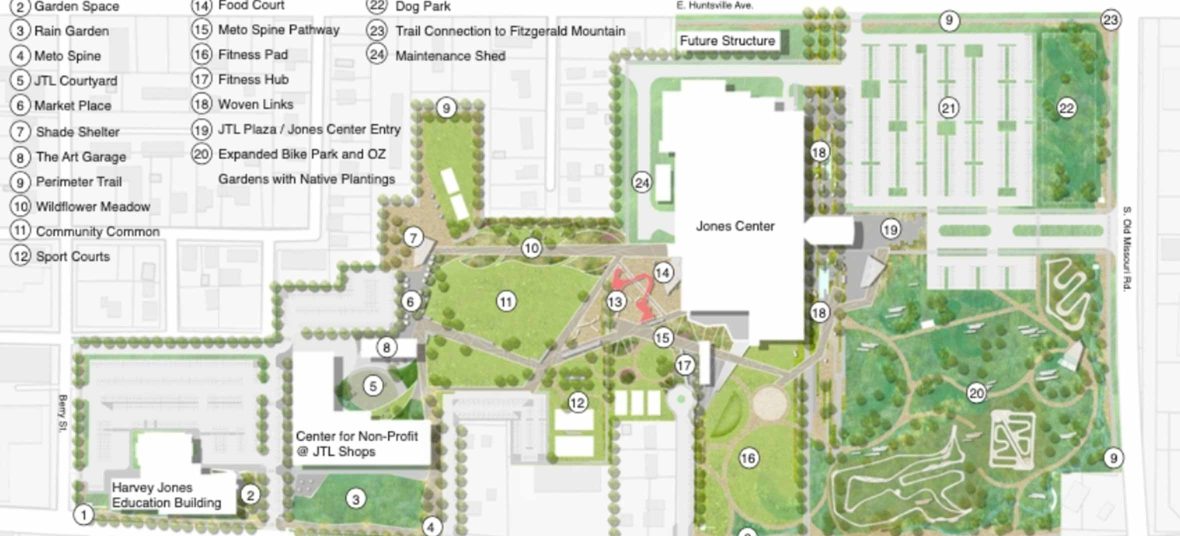
All of the stories we’ve heard make it clear that this community longs for a gathering place that is their own, to use when and how they want to. So, we’ve designed this 52-acre campus to deliver a wide range of meaningful and personal experiences. Garden spaces and wildflower meadows will be the backdrops for quiet connections with nature. An outdoor fitness pad and a new use of the old Jones Truck Line wash building will offer flexible space for groups and organizations to host classes or events. Outdoor courts will be available for basketball, pickleball and more. Bleachers as well as outdoor picnic tables adjacent to the Jones Center’s indoor cafeteria will provide space to sit and eat. A triangular play zone, for which we’re collaborating with Earthscape Play, will feature an accessible play structure, as well as space for nature play and different zones for different age groups. A courtyard between the Jones Truck Line shops (already used as the Center for Nonprofits) and tire building (envisioned as the art garage) will become an outdoor living room-like space and an appealing amenity for the buildings’ workforce. And a marketplace zone, with adjacent space for parking, will enable farmers markets and pop-up events.
At the core of campus is the “Community Common,” a large open green space that can be used for soccer games, performances, and other large gatherings. This is one of those spaces that is currently underutilized but that has major potential to become a meaningful community hub. The community just needs to know that it’s there—and that it’s theirs. We’re hopeful that our strategic design interventions around the perimeter of the site and cutting into the site will create more visibility into the campus core, drawing people to come in and discover.
We also take seriously the Jones Center Campus’ prominent position in this community, and in the surrounding region. In fact, we’ve teamed up with local landscape architect E|D|G to address the fact that the site is at the top of the Illinois River watershed. There’s an opportunity and a responsibility to properly manage and filter the campus’ stormwater, since it has such an impact. This sense of responsibility also extends to the architecture. Two shade shelters—one near the Community Common and the other in the Bike Park—are the only new structures on the campus. Our design strategy to adapt and reuse is intended not only to maximize the existing buildings in order to make the campus project more achievable; but it also honors the legacy of Jones Truck Lines and acknowledges that without Harvey and Bernice Jones’ commitment to service, giving, and to the community’s quality of life, this campus would not exist today.
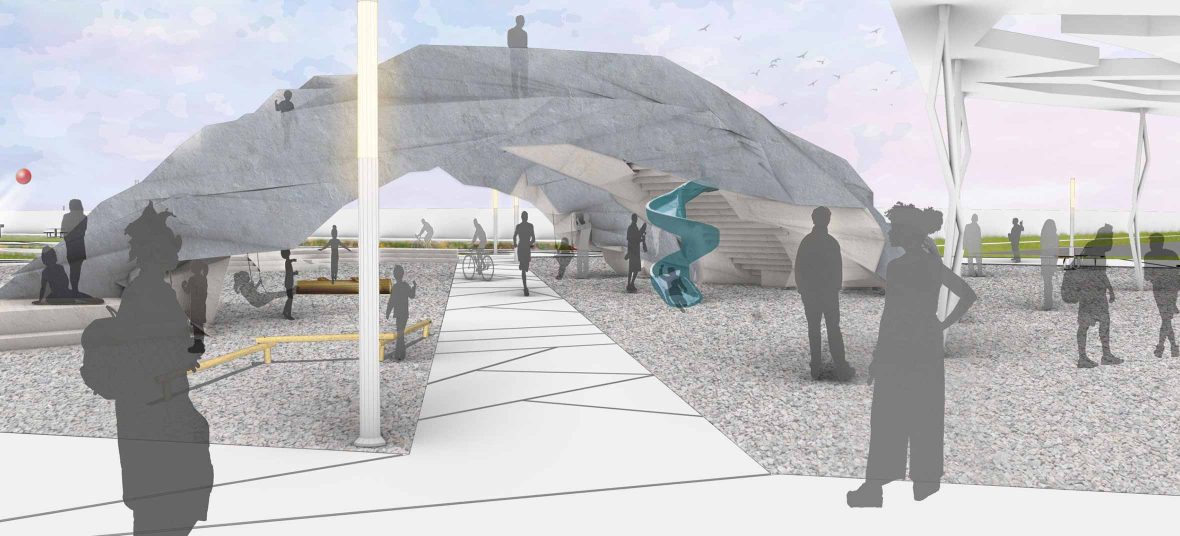
Experience: Understand the Stories
Many people who are involved in designing and planning the Jones Center Campus today grew up in Springdale and have memories of the Jones Center at different stages of their life. These personal connections have a powerful impact on the ideas we envision together. Each of us is motivated to design a place where they can now create new memories with their families and neighbors. I recently visited the Springdale site, and it’s clear that people are excited about revitalizing the space. They’ve seen the renovation of the main Jones Center building and are now excited to transform the rest of the campus. The past (and still current) experience, though, is to go into the building, use the building, exit the building, and leave, usually without touching any other components of the large campus. I look forward to seeing all 52-acres being used and loved once the project is complete.
Now that the conceptual designs have been developed, it’s time to get into design details and start to think about implementation. In a few weeks, we’ll host another community event onsite at the campus, where we’ll present digital imagery including a 3D model and fly-through video, paired with in-person site tours so community members can visualize current and future conditions simultaneously. It’s a fun way to experience the intersection of digital and natural. As a landscape architect, I’m trained to understand the details of a site using technology like Google Earth, satellite photos, maps, plans, and more. This has enabled our whole team to feel like we’re there—or anywhere we need to be—especially during the pandemic, when travel has been limited. And luckily, these digital tools are so powerful that the site was already very familiar to me when I finally visited in person. Having heard so many community stories, I feel equipped to leverage my training and experience to help create a beautiful and functional space—to tell those community stories. Ultimately, my goal is for the community to feel like their story is heard. This is their place. Truly a place for all.
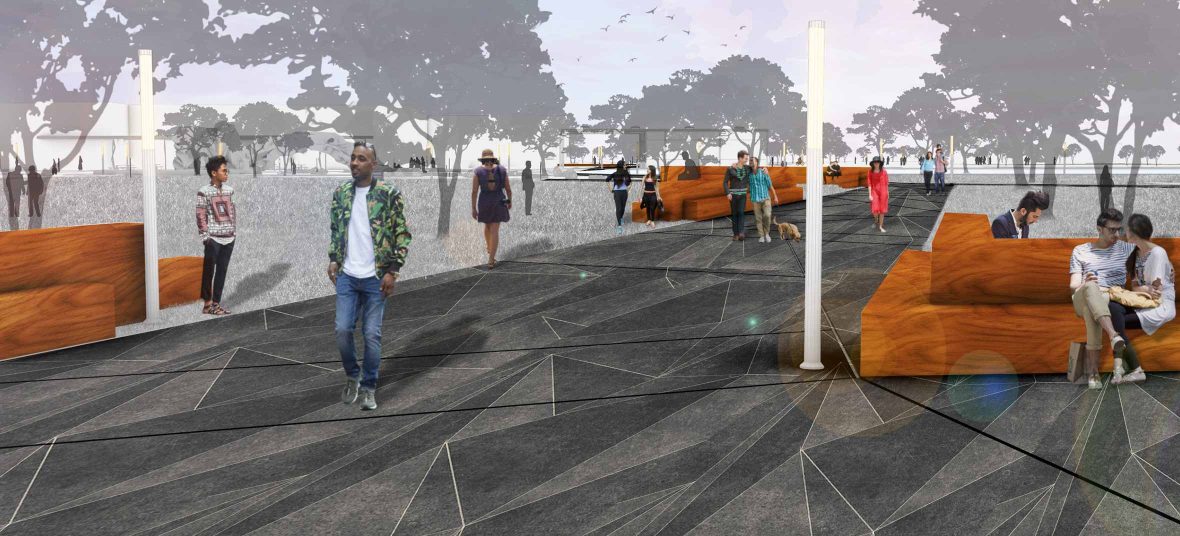
What stories does your community have to tell? Reach out. We’d love to hear them, and tell them.
